Spotlight on Emily Berl
Oct 12, 2014
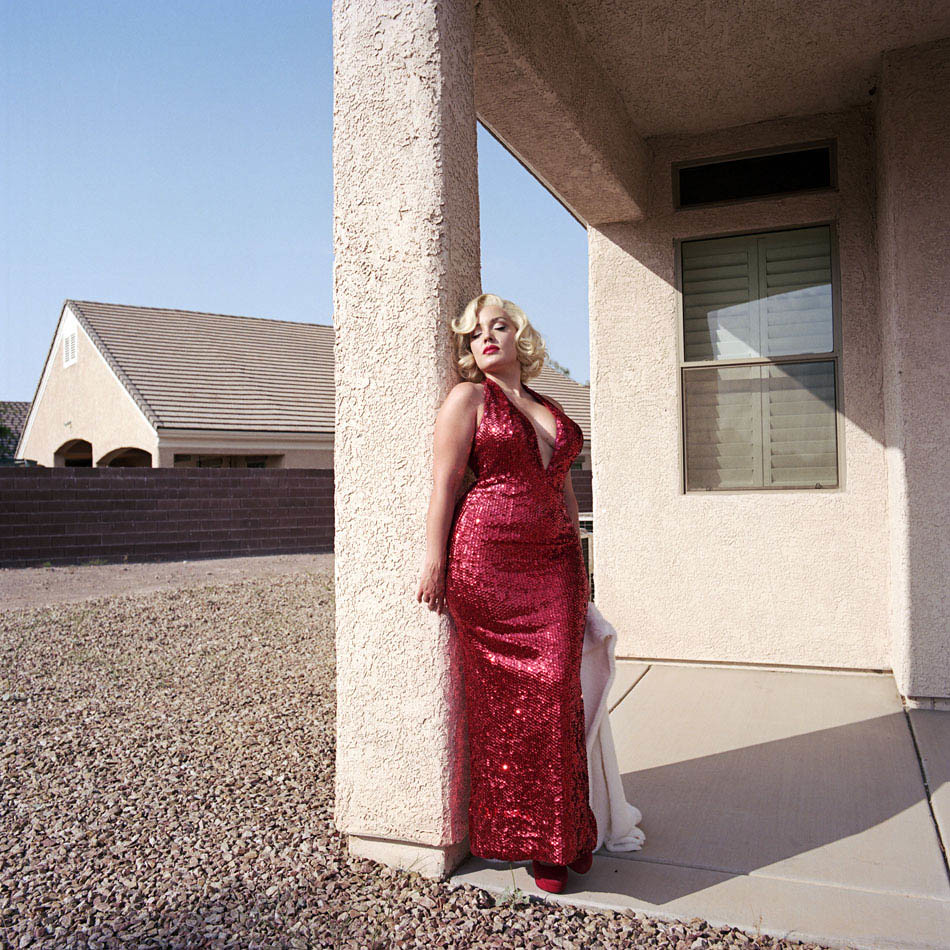
TID:
This is a quirky picture, and visual for sure. What’s the backstory of the image?
EMILY:
Haha, thanks! This picture is part of an ongoing portrait project I have been working on since early 2013 called Marilyn. The project started when I moved to Los Angeles from New York in 2012. I was struggling to understand my new home and I was looking to start a project that would help me learn more about this city, which was so new and strange to me. I decided to use Marilyn Monroe as a metaphor for Los Angeles and The Hollywood Dream. I began taking portraits of Marilyn Monroe impersonators and other people who dress as her.
This woman is named Jami Edwards and she works often as a Marilyn in Las Vegas.
TID:
This is part of a larger series; can you talk about why you conceived this and how you began framing it out?
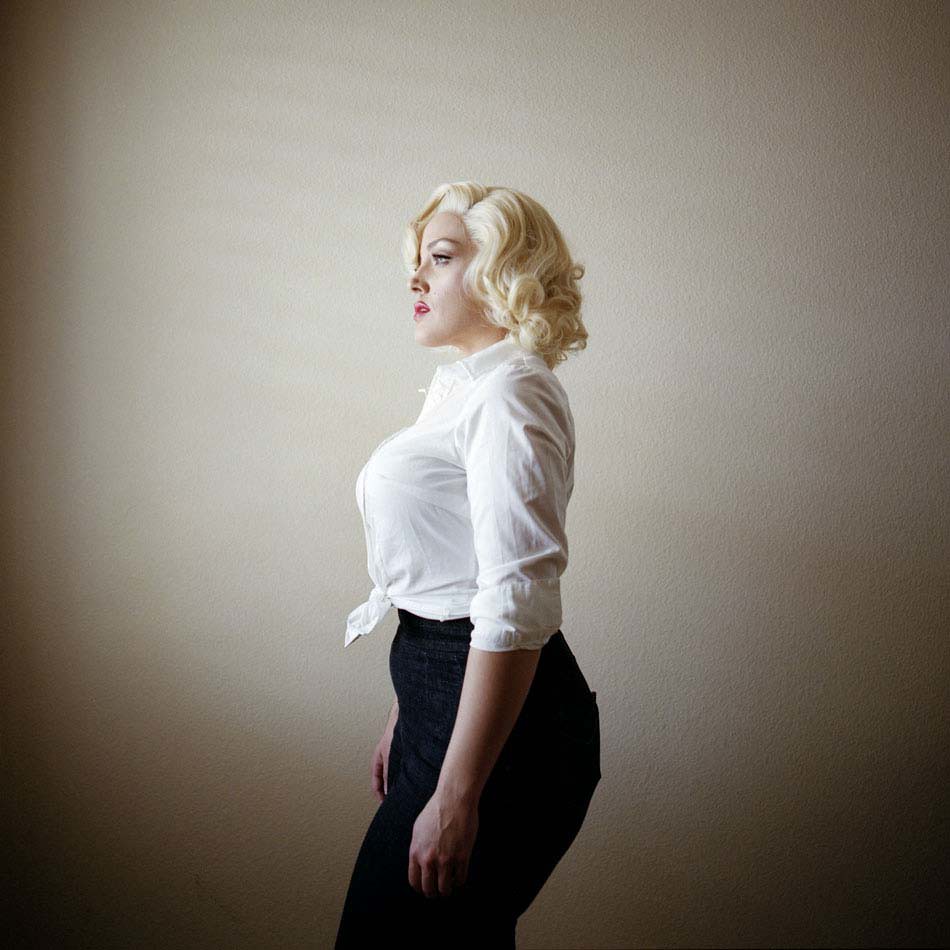
EMILY:
While trying to find a personal project that would help me explore my new city, I was on assignment one day and ran into a woman dressed as Marilyn Monroe. I started to think about Monroe and her legacy. It occurred to me that she perfectly represents Los Angeles and good and the bad of The Hollywood Dream. She embodies why people have come to L.A. for generations and why people still come to “make it.” This idea of pursuing one’s dream is an idea that has interested me for years, and it plays a big role in much of my work.
I decided to start a portrait project about people who dress as Marilyn in Los Angeles. While some call themselves “impersonators,” others prefer other terms like “tribute artist” or “look alike.” These terms are tricky because everyone has a slightly different conception of why they dress as Marilyn.
As I got deeper and deeper into this project, I realized that the Marilyn Monroe phenomenon reaches far past L.A. I decided that to just limit this project to California would not do justice to her historical impact and her lasting legacy. At this point, I have sort of gone down the Marilyn Monroe rabbit hole and have photographed people all over the world.
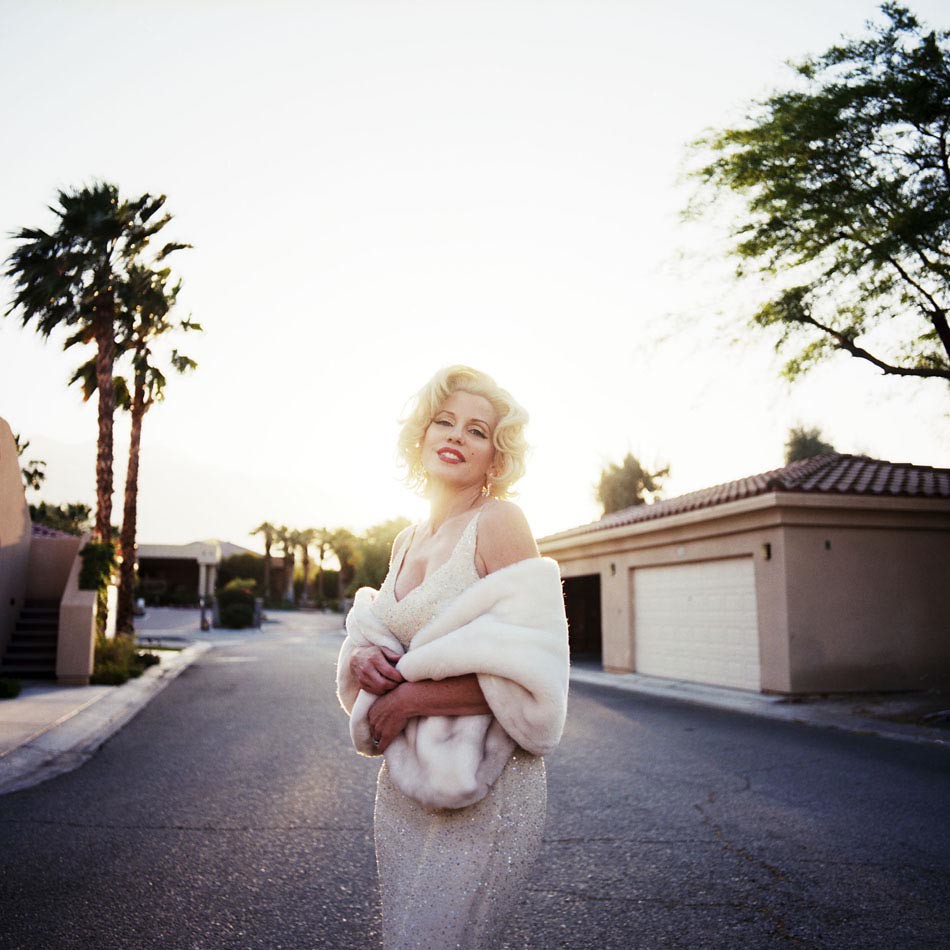
TID:
What sort of mental preparation did you have going into this series?
EMILY:
I had to make some decisions about the visual direction I wanted this project to take and I also had to set criteria for choosing subjects.
I decided to use medium format film because I had not done a project in film for a few years. In addition to the fact that film just looks better than digital, using film really keeps me accountable for every frame. I feel like with digital I can get sloppy and overshoot. I end up taking a bunch of repetitive frames and I’ll shoot around a lot before I figure out how the frame is supposed to look instead of thinking it through first. With film, I have to visualize and think about the picture before I shoot anything.
When deciding which subjects I would choose for the project, I decided to only photograph people who I felt were really dedicated to Marilyn Monroe in some way. Most of my subjects feel some sort of personal connection to her and her story and are dedicated to preserving her legacy. There are others who dress as Marilyn without knowing anything about her or play her as an overly sexualized caricature. While that is totally fine, I decided not to include them in this project.
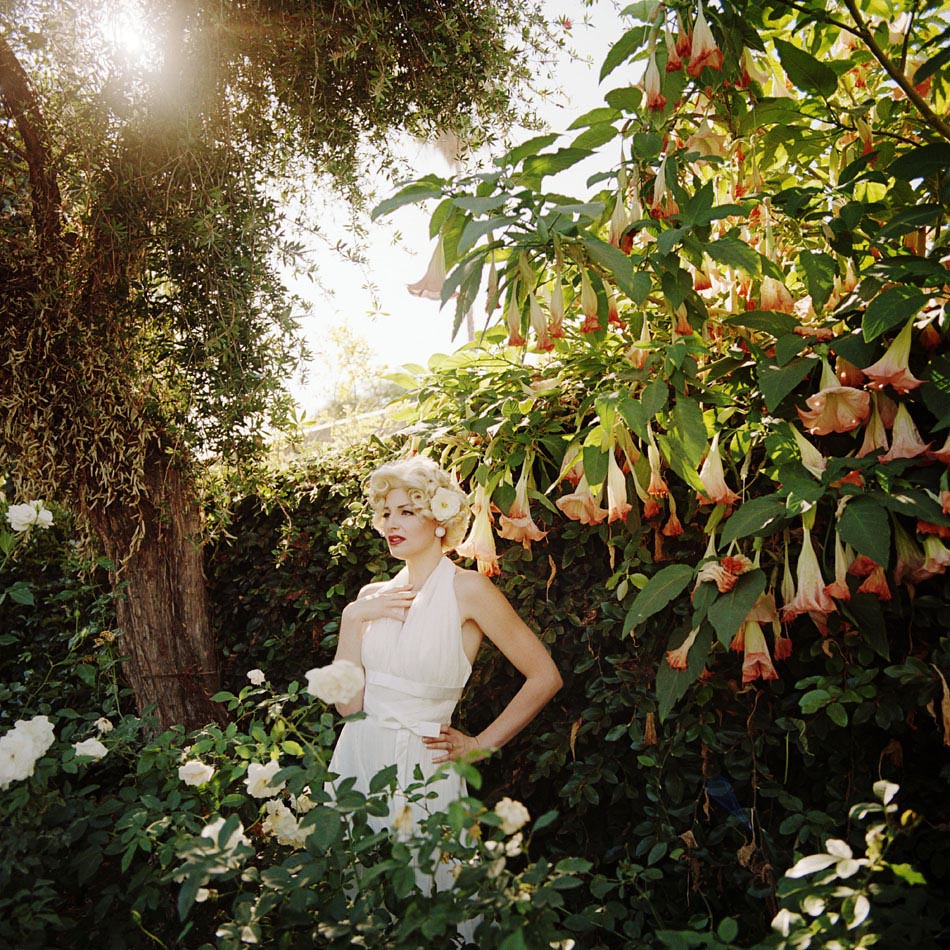
But before I started taking photos, I did my research on Marilyn Monroe because honestly I did not know much about her prior to this project. I read books, talked to people, and attended fan meetings in L.A. She was a very smart, savvy, complicated person who had a huge impact on Hollywood and the idea of celebrity. While her image is universally recognizable today, much of her true character and contribution is not widely known.
TID:
What challenges did you encounter while working to make this series, especially at the beginning?
EMILY:
Access for this project was definitely nowhere near as difficult as some of the stories I have worked on in the past, but this one had it’s own set of obstacles. With portrait projects, the first few subjects are always a little tricky to figure out. You have to get your pitch down and try to explain what you’re doing without having anything concrete to show. I always feel like it takes a while to form a good concise explanation for a project that gets your goals across. After a few shoots, everything falls in line. But all that being said, the women I’ve shot for this project have been great and have really understood what I’m trying to do. They’ve all been a pleasure to work with.
Another issue I had to work out was how to have some sort of visual consistency throughout the project with subjects shot at different times and different locations.
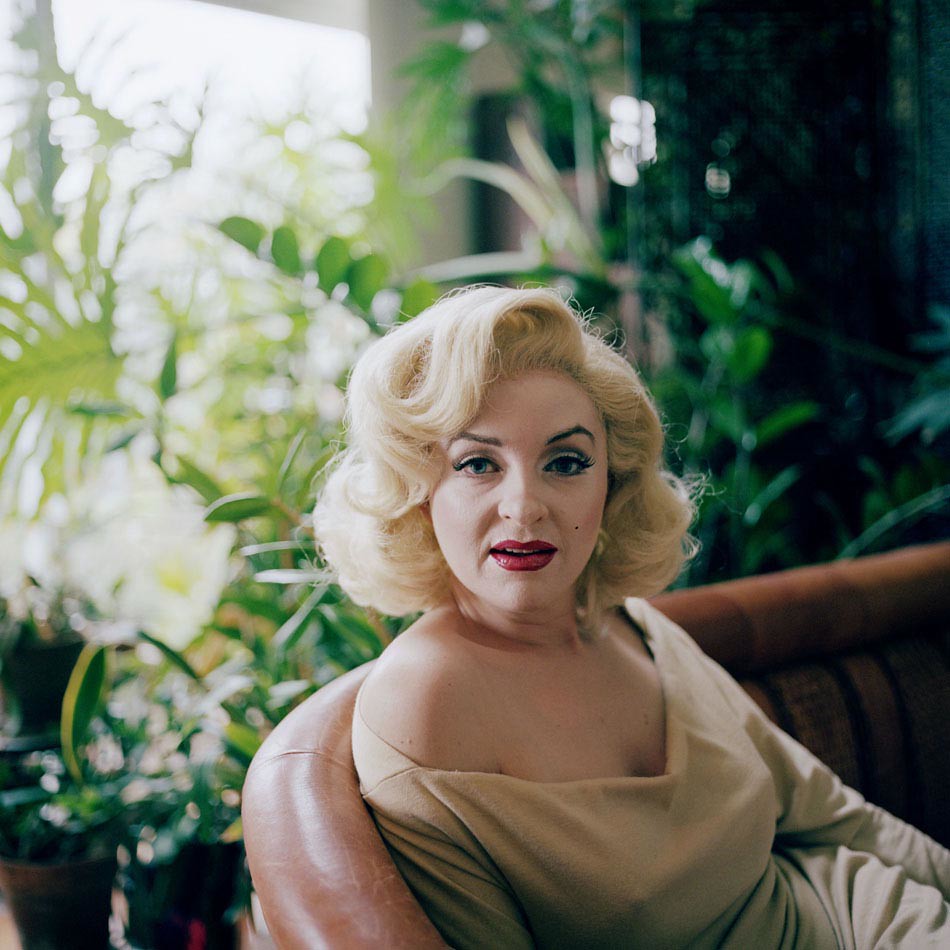
TID:
How did you handle and overcome these problems?
EMILY:
I guess I just learned from my mistakes and missteps. When I wasn’t getting my point across clearly I had to step back and think of a better way to approach a topic.
As far as the visual issues go, I had to play around until I figured out something that worked. At first, I tried to shoot the Marilyn’s in front of a white seamless as well as doing environmental portraits. After a couple shoots, I realized that it was too much to tackle in the often-short amount of time I had with people. Also, I realized that the environmental shots were much more interesting and dynamic. After figuring that out, I started to look for locations for the shoots that had a similar feel. The backdrops that I think really work are generally plain, anonymous and timeless. For the most part, these spaces could be anywhere at any time. I’m not interested in making these pictures look like they were taken in Marilyn’s day, but I am drawn to the anonymity of the locations.

TID:
Can you talk about the moments leading up to the picture and also the actual moment.
EMILY:
The shoot took place at Jami’s (the subject) home outside of Las Vegas. I generally like taking portraits at peoples’ homes because you can learn so much about a person from where they live. Also, they’re comfortable in their own space. The backyard was really plain and open and I felt like it was perfect for the shoot. Unfortunately, it was 117 degrees that day and photographing her outside in a full-length sequin dress and full makeup was tricky. We could only really be outside for a few minutes at a time before it was just too hot. This roll was taken in only a couple minutes and I worked around her until she fell into the right light and I shot this frame. I did a few more after this, but the one where she had her eyes closed really hit for me.
TID:
What surprised you about the image? What has surprised you about the making of the series?
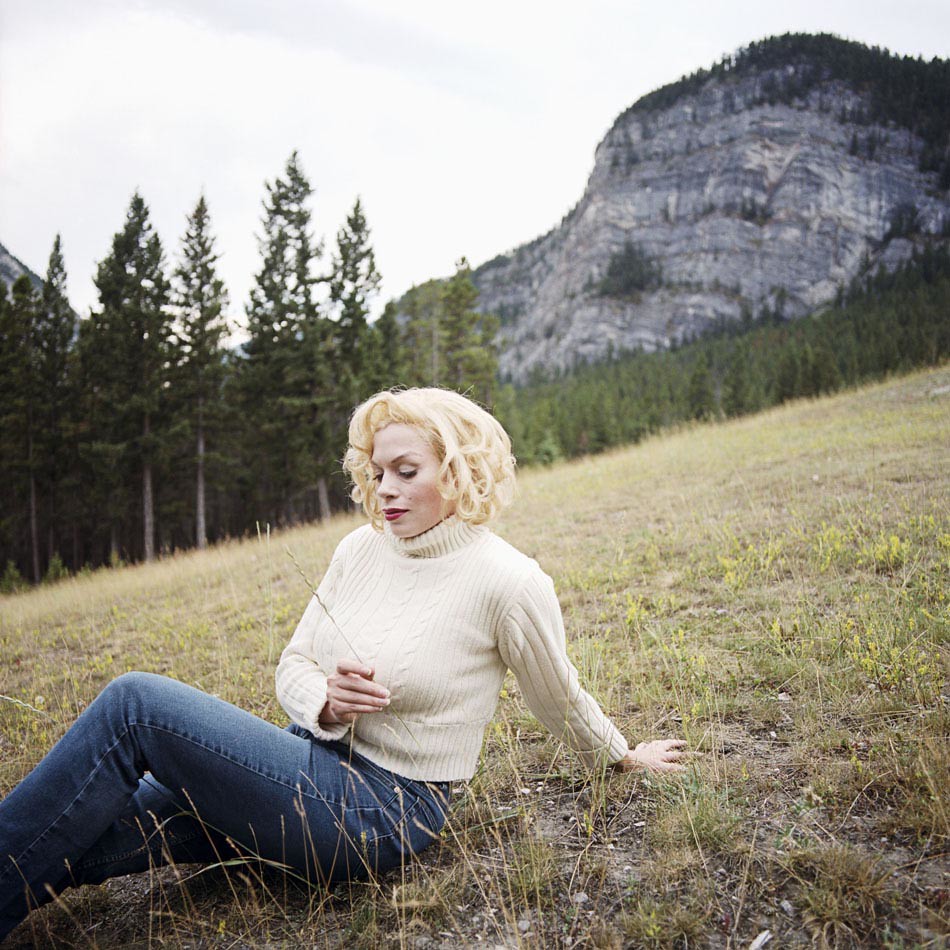
EMILY:
What surprised me about the image is that it worked out at all and didn’t look like a hot sweaty mess. The sun was really bright that day and I was worried it would be too much for the photo, but it wasn’t. It was a relief and it ended up being the visual direction I strive for in the rest of the photos from the series. When I start a project, I have an idea of what I want to do, but I’m never sure how it will actually look until I’m in it. This project ran the risk of coming off as a bit goofy, but I was really committed to showing these women with beauty and respect and not as obsessive super fans, because that would not be accurate.
I have interviewed all of the subjects to go along with the photos and I’ve been surprised with the similarities in many of their answers. Almost everyone has talked about the connection they feel with the real Marilyn and their desire to protect her and preserve her legacy. I think people find strength and inspiration from her story. The subjects I’ve photographed are concerned with remembering Marilyn for the right reasons.
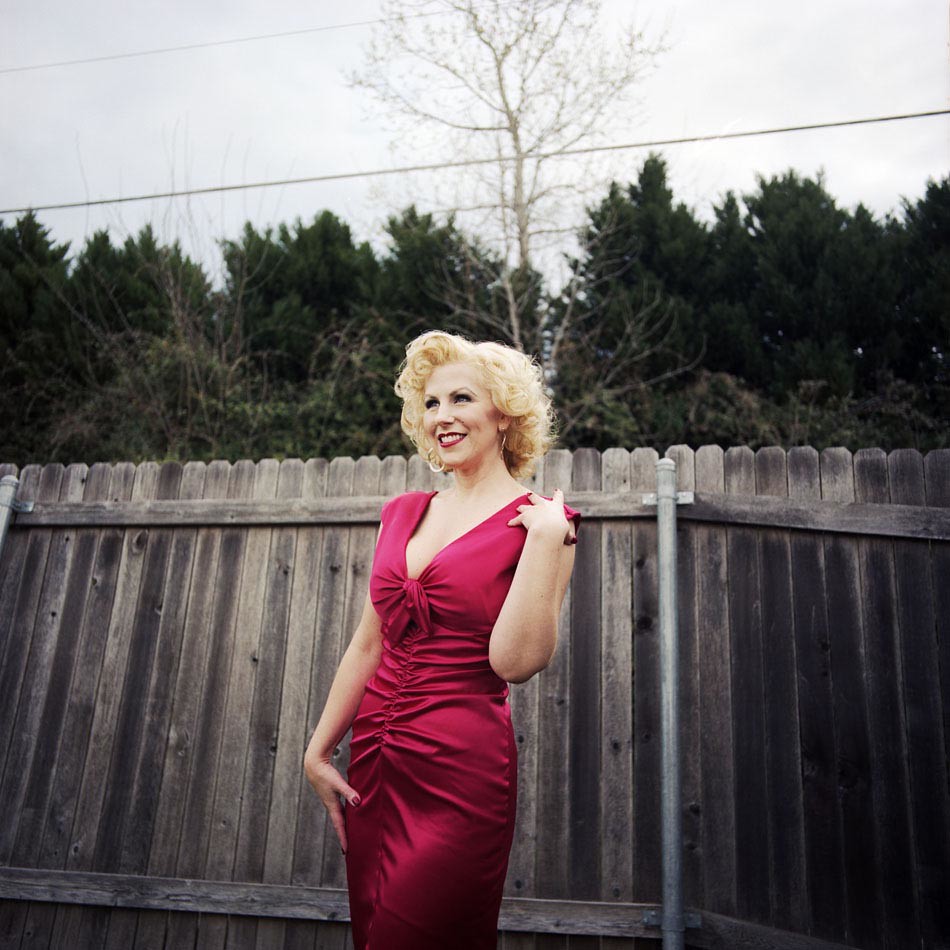
TID:
What have you learned about yourself in the process of making images like this?
EMILY:
I think this project was a new visual direction for me. While I do consider it to be somewhat of a documentary project, it’s a large step away from photojournalism (which is the area I’d mostly worked in before). I’ve been less concerned about what genre of photography the project fits into, and more interested in making pictures that satisfy me.
TID:
What have you learned about others?
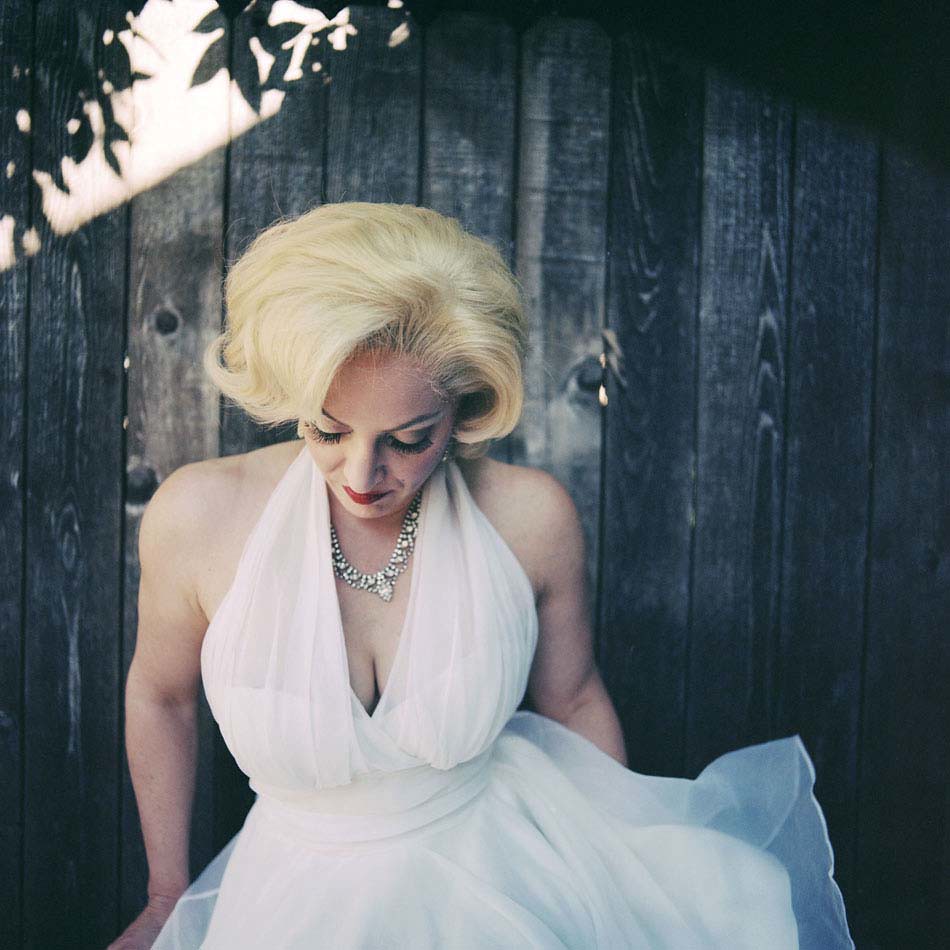
EMILY:
I think I’ve learned most about what motivates people. Becoming Marilyn Monroe is quite an undertaking that involves hours of makeup, lots of time and money spent on costumes and a lot of research. These women are totally dedicated to doing it right and representing the best Marilyn they can, for whatever reason they choose to do it. It’s interesting to me to be able to tap into people’s dreams and aspirations and to learn the why. I’ve also learned so much about the Marilyn Monroe community.
Before starting this project, I knew there were fans but I had no idea about how far reaching and how dedicated they are. They have monthly gatherings, yearly memorials and are in constant contact through Facebook and the like. It reminds me just how powerful the Internet is and that it can connect like-minded people from all over the world who might not have ever met otherwise.
TID:
In conclusion, what advice do you have for photographers?
EMILY:
My main advice is to always be shooting. Take risks, mess up, and learn things. I hate it when an idea doesn’t pan out, but failure is good sometimes because it makes you better. Also, shoot personal projects. If you’re looking to get into editorial work, editors want to see that you are producing work on your own that you care about. They want to see that you actually like photography and are self-motivated, not just waiting for someone to assign you. Also, isn’t personal work the real goal anyways? If you’re not into shooting for yourself, what’s the point?
I’d also say, try not to always think about the big picture (something I have to remind myself of that). Don’t worry about all the things you have to accomplish in your career and what everyone else is doing, just worry about what you’re doing today and make your work the best it can be.
Project wise; don’t worry about switching the direction once you’ve started. Be open to new ideas and changing things up. When you go into a project with a really rigid view of what it’s going to be and how it’s supposed to look, it’s sometimes difficult to look at it objectively and see if it’s working or not. If you’re too concerned with making it fit into a pre-conceived box, you can miss something wonderful.

:::BIO:::
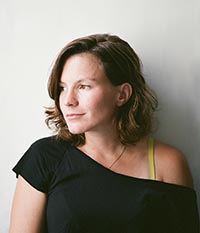
Emily Berl is a frelance photographer based in Los Angeles, California. She was born and raised in Washington, DC and studied photojournalism and art history at Boston University. She started her photography career in New York before moving to Los Angeles in 2012. Her clients include: The New York Times, The Wall Street Journal, National Geographic, The FADER, Details, Billboard and The Hollywood Reporter. When not taking photos, she can be found exploring Southern California with her dog, Lola.
Website: www.emilyberlphoto.com
Instagram: http://instagram.com/emilyberl
Twitter: https://twitter.com/EmilyBerl